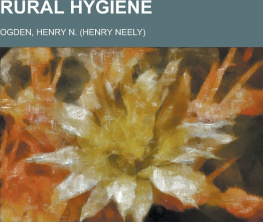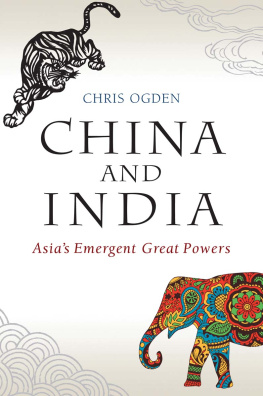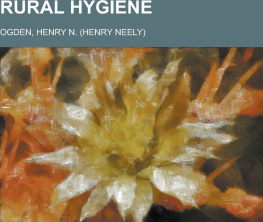The Project Gutenberg EBook of Rural Hygiene, by Henry N. Ogden
This eBook is for the use of anyone anywhere at no cost and with
almost no restrictions whatsoever. You may copy it, give it away or
re-use it under the terms of the Project Gutenberg License included
with this eBook or online at www.gutenberg.org
Title: Rural Hygiene
Author: Henry N. Ogden
Release Date: July 31, 2009 [EBook #29555]
Language: English
*** START OF THIS PROJECT GUTENBERG EBOOK RURAL HYGIENE ***
Produced by Tom Roch, Josephine Paolucci and the Online
Distributed Proofreading Team at http://www.pgdp.net. (This
file was produced from images produced by Core Historical
Literature in Agriculture (CHLA), Cornell University.)
The Rural Science Series
Edited by L. H. BAILEY
RURAL HYGIENE
THE MACMILLAN COMPANY
NEW YORK BOSTON CHICAGO
ATLANTA SAN FRANCISCO
MACMILLAN & CO., LIMITED
LONDON BOMBAY CALCUTTA
MELBOURNE
THE MACMILLAN CO. OF CANADA, LTD.
TORONTO
RURAL HYGIENE
BY
HENRY N. OGDEN, C.E.
PROFESSOR OF SANITARY ENGINEERING IN COLLEGE OF CIVIL ENGINEERING, CORNELL UNIVERSITY SPECIAL ASSISTANT ENGINEER, NEW YORK STATE DEPARTMENT OF HEALTH
New York
THE MACMILLAN COMPANY
1911
All rights reserved
Copyright , 1911,
By THE MACMILLAN COMPANY.
Set up and electrotyped. Published January, 1911.
Norwood Press
J. S. Cushing Co.Berwick & Smith Co.
Norwood, Mass., U.S.A.
PREFACE
The following pages represent an attempt to put before the rural population a systematic treatment of those special subjects included in what is popularly known as Hygiene as well as those broader subjects that concern the general health of the community at large.
Usually the term "hygiene" has been limited in its application to a study of the health of the individual, and treatises on hygiene have concerned themselves almost entirely with discussing such topics as food, clothing, exercise, and other questions relating to the daily life of a person. Of late years, however, it has become more and more evident that it is not possible for man to live to himself alone, but that his actions must react on those living in his vicinity and that the methods of living of his neighbors must react on his own well-being. This interdependence of individuals being once appreciated, it follows that a book on hygiene must deal, not only with the question of individual living, but also with those broader questions having to do with the cause and spread of disease, with the transmission of bacteria from one community to another, and with those natural influences which, more or less under the control of man, may affect a large area if their natural destructive tendencies are allowed to develop.
Being written by an engineer, the following pages deal rather with the structural side of public hygiene than with the medical side, and in the chapters dealing with contagious diseases emphasis is attached to quarantine, disinfection, and prevention, rather than to etiology and treatment. The book is not, therefore, a medical treatise in any sense, and is not intended to eliminate the physician or to give professional advice, although the suggestions, if followed out, undoubtedly will have the effect of lessening the need of a physician, since the contagious diseases referred to may then be confined to single individuals or to single houses.
It has not been possible, within the limits of this one book, to describe at length the various engineering methods, and while it is hoped that enough has been said to point the way towards a proper selection of methods and to a right choice between processes, the details of construction will have to be worked out in all cases, either by the ingenuity of the householder or by the aid of some mechanic or engineer.
Finally, it may be said that two distinct purposes have been in mind throughout,to promote the comfort and convenience of those living in the rural part of the community who, unfortunately, while most happily situated from the standpoint of health in many ways, have failed to give themselves those comforts that might so easily be added to their life; and in the second place, to emphasize the interdependence of the rural community and the urban community in the matter of food products and contagious diseases, an interdependence growing daily as interurban communications by trolley and automobile become easy.
Cities are learning to protect themselves against the selfishness of the individual, and city Boards of Health have large powers for the purpose of guarding the health of the individuals within their boundaries. The scattered populations of the open country are not yet educated to the point at which self-protection has made such authority seem to be necessary, and it is left largely to an exalted sense of duty towards their fellow-men so to move members of a rural community as to order their lives and ways to avoid sinning against public hygiene. In order to develop such a sense of honor, it is primarily necessary that the relation of cause and effect in matters of health shall be plainly understood and that the dangers to others of the neglect of preventive measures be appreciated. As a single example, the transmission of disease at school may be cited. Measles, scarlet fever, whooping cough, and diphtheria are all children's diseases, easily carried and transmitted, and held in check only by preventing a sick child from coming in contact with children not sick. No law is sufficient. The matter must be left to the mother, who will retain children at home at the least suspicion of sickness and keep them there until after all traces of the disease have passed away.
The health conditions in the open country, judged by the standard of statistics, are quite as good as those of the city. The comforts of country life are as yet inferior, and it is hoped that this book may do something to advance the standard of living in the families into which it may enter.
H. N. OGDEN.
Ithaca, New York ,
November 1, 1910.
CONTENTS
CHAPTER I
Vital Statistics of Rural Life
PAGES
Death-rate. Ideal death-rates. Death-rates in New York State. Accuracy of records. Effect of children. Death-rates of children. Small cities. Tuberculosis. Diphtheria, Influenza. Pneumonia. Old age -24
CHAPTER II
Location of a HouseSoil and Surroundings
Damp soils. Location of house. Objections to trees. Space between houses. Composition of soils. Cancer and soil conditions. Topography. Effects of cultivation. Made ground. Water in soil. Drainage. Ground water -48
CHAPTER III
Construction of Houses and Barns With Reference to Healthfulness
Shutting out soil air. Position of outfall for drains. Dampness of cellar walls. Use of tar or asphalt. Dry masonry for cellar walls. Damp courses. The cellar floor. Cellar ventilation. The old-fashioned privy. Cow stables. Use of concrete -67
CHAPTER IV
Ventilation
Effects of bad air. Modifying circumstances. Dangers of polluted -89
CHAPTER V
Quantity of Water Required for Domestic Use
Modern tendencies. Quantity of water needed per person. Quantity used in stables. Maximum rate of consumption. Variation in maximum rate. Fire stream requirements. Rain-water supply. Computation for rain-water storage. Computation for storage reservoir on brook. Deficiency from well supplies -107
CHAPTER VI
Sources of Water-supply
Underground waters. Ordinary dug well. Construction of dug wells. Deep wells. Springs. Extensions of springs. Supply from brooks. Storage reservoirs. Ponds or lakes. Pressure or head -130
CHAPTER VII
Quality of Water
Mineral matter. Loss of soap. Vegetable pollution. Animal pollution. Well water. Danger of polluted water -152












